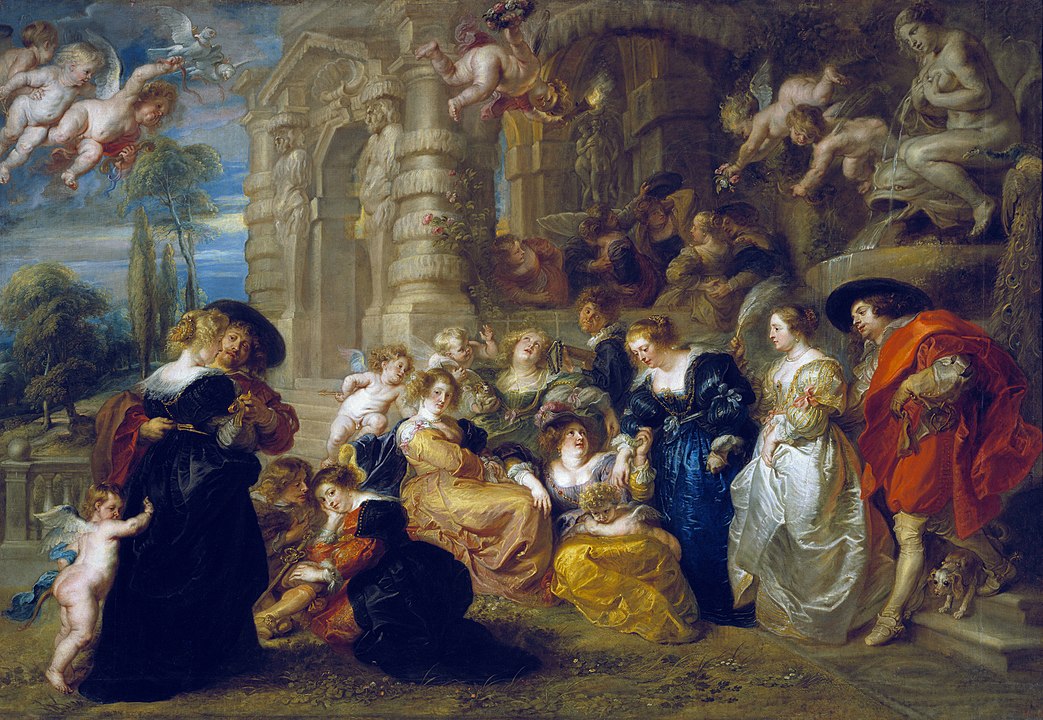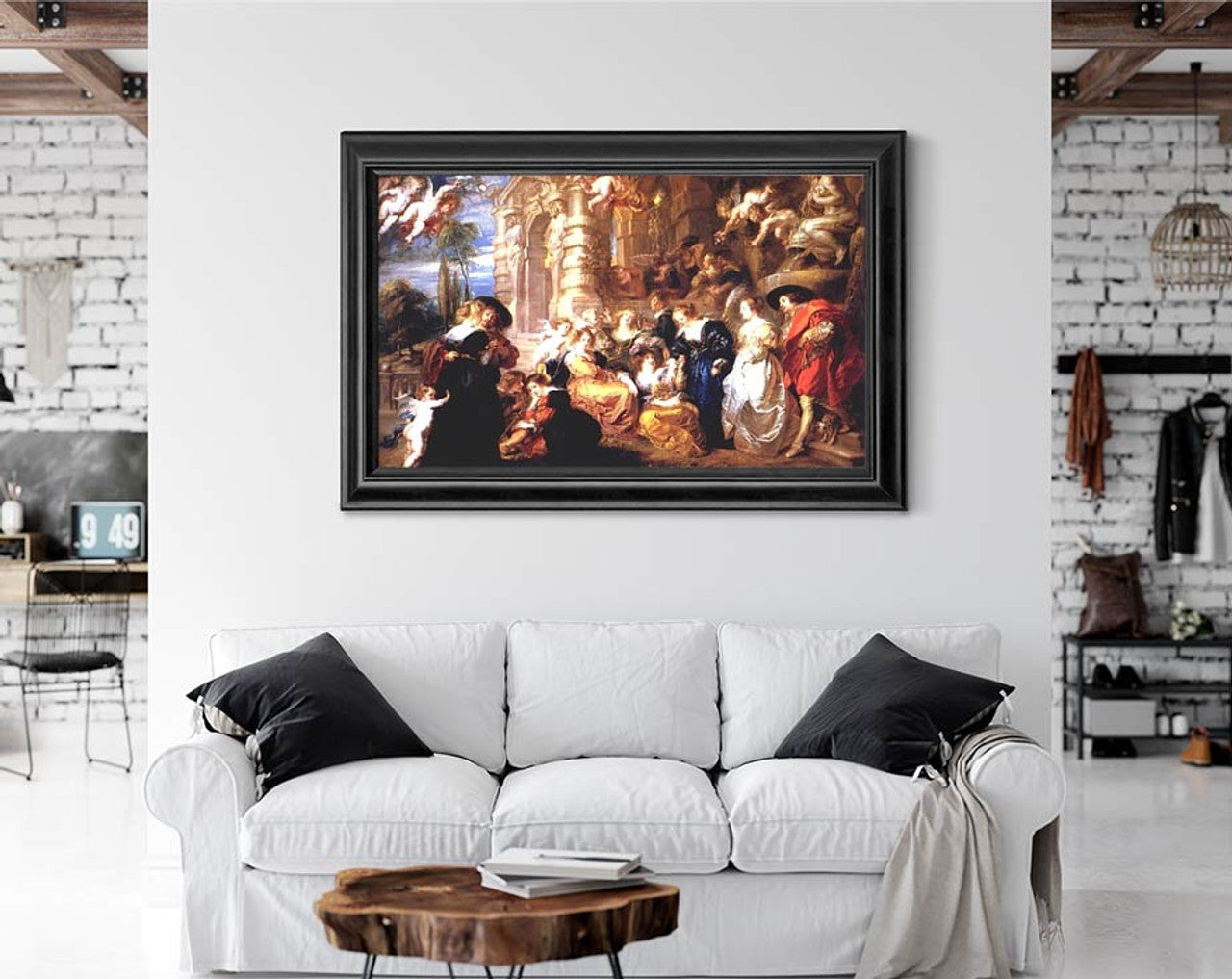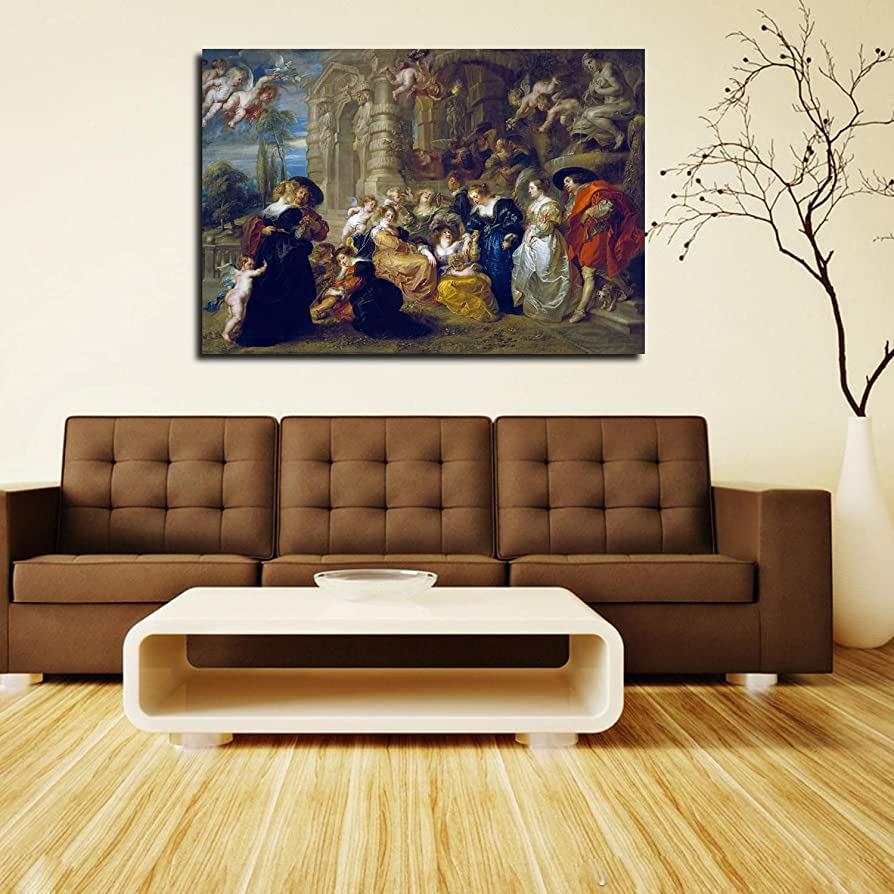Description
Painted shortly after Rubens's marriage to his second wife, Hélène Fourment, The Garden of Love is believed to be a celebration of their union. In fact, as with The Judgment of Paris, she is believed to have been the inspiration behind the painting's female subjects. The influence of The Garden of Love, which is now in the Museo del Prado in Madrid, has been noted by the British art critic Waldemar Januszczak, who sees its legacy in later works such as Jean-Antoine's Gallant Party paintings. Watteau and the works of Watteau's fellow rococo artists. François Boucher and Jean-Honoré Fragonard.
In The Garden of Love one of Rubens' greatest gifts as a painter is revealed : his ability to create images of a joyful way of being in the world related to love and inspired by ancient literature and Renaissance art. In the case of the latter, this mainly means Titian. This painting is especially close in mood to the Bacchanalia of the Andrios and the Adoration of Venus. Many features of this scene are reminiscent of Titian's paintings: the coexistence of mythical and real-life characters, the presiding statue of Venus, the flying children, the natural setting and its rich coloring, the sensual atmosphere and sexual innuendo, the presence of music, the relative size of the figures within the composition. Rubens was familiar with Titian's works, most likely through copies (they had not yet reached Spain when he last visited them in 1628-29), and he painted two versions of them around the time he painted the Garden of Love. In this painting we see that Rubens has fully assimilated the influence of the Venetian master.
Rubens uses motifs from Renaissance sculpture, but places the scene in the Mannerist portico of his own house in Antwerp, suggesting that it is a self-portrait with friends. In the first inventories it was called the Rubens Family, but in any case it is an allegory and exaltation of conjugal love and happiness.
The theme is traditional medieval, in which lovers were conventionally shown in a garden, sometimes with moral messages or symbols accompanying them. In the Italian Renaissance the theme had been represented in 'fête champêtres' like the one attributed to Giorgione or Titian in the Louvre Museum. This painting by Rubens is an important link in the tradition that runs from those works to scenes by Watteau and Pater in the eighteenth century.
This work was cataloged for the first time in 1666, when it hung in the King's bedroom in the Alcázar in Madrid.



